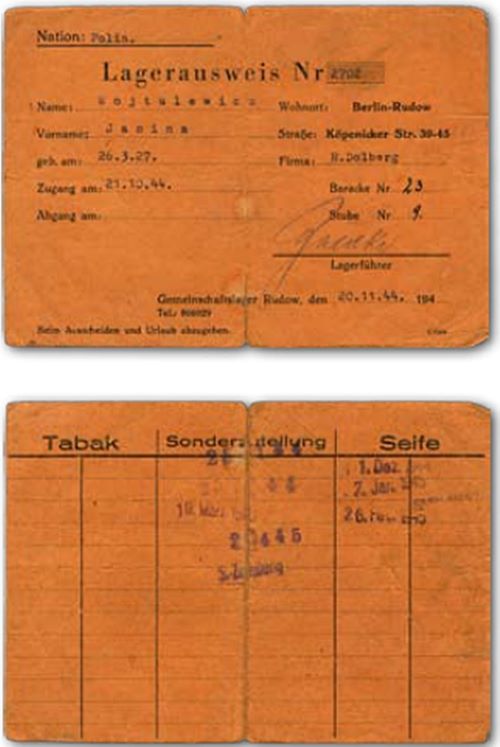“camp pass”. Type of document issued for the workers deported to Germany to special camps – Gemeischaftlager. The card from the camp included not only the identification information about their workplace but also on the back, their allocation of tobacco (Tabak), soap (Seife) and “special allocations” – Sonderzuteilung. The camp was often monitored by a person delegated by the German Labor Front – Deutsche Arbeits Front (DAF), which held a number of police functions. These barracks labor camps were located in large industrial areas or in urban centers. The camps were usually placed in unused public or industrial buildings. This could be old dance halls, cinemas, fire stations and closed factories. Alternatively, special barracks were created from scratch. Due to the original use of the buildings, most lacked a sufficient number of bathrooms, kitchens and laundries. The interior design was the most basic, included only simple furniture. They lacked a sufficient quantity of blankets, which caused suffering from the cold to the inhabitants of the camps. In the summer, living in the barracks added also heat and stuffy air. The progressive destruction caused by the war, the lack of repairment and construction, increased the demand for cheap labor which led to densely populated Gemeinschaflager camps by the end of the war. These camps were often surrounded by barbed wire, which resembled to the penal camps. For these reasons, some administrations of camps refused to accept forced labor workers from Western Europe.
